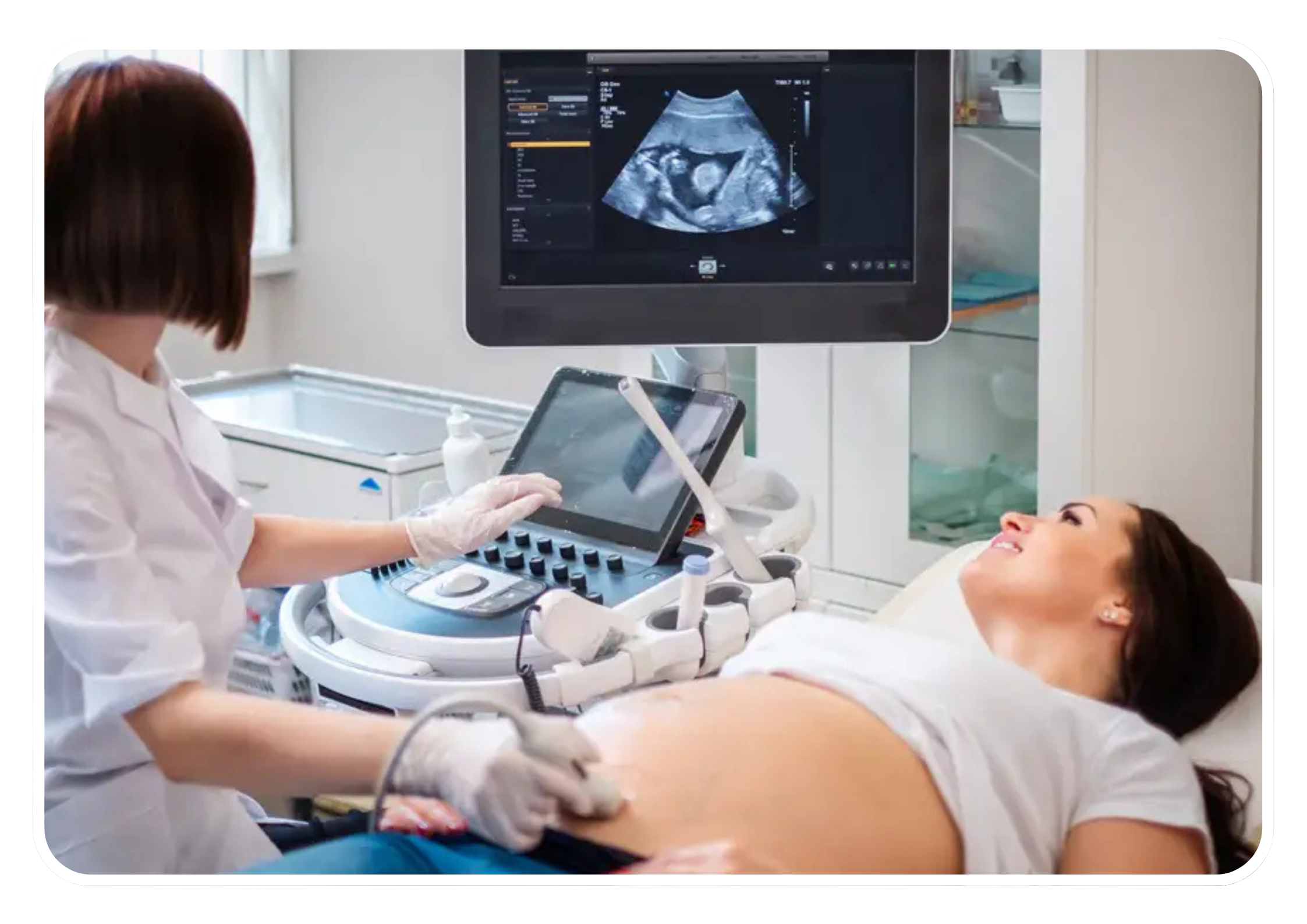Purpose
The anomaly scan aims to:
- Evaluate the anatomy and growth of the fetus.
- Detect structural abnormalities or developmental defects.
- Provide crucial information for patient counseling, decision-making, and pregnancy management.
Timing
The anomaly scan is typically performed between 18 to 22 weeks of gestation. This period allows optimal visualization of fetal structures and organs, as most major anatomical features are well-developed by this stage of pregnancy.
Structures Assessed
The anomaly scan evaluates the following fetal structures and organs:
- Central Nervous System: Brain, spine, and cranial structures.
- Head and Facial Features: Skull, face, orbits, and lips.
- Thorax: Heart, lungs, and chest wall.
- Abdomen: Liver, kidneys, stomach, and intestines.
- Extremities: Arms, legs, hands, and feet.
- Umbilical Cord: Number of vessels and insertion site.
- Placenta: Location, size, and appearance.
Anomaly Detection
The anomaly scan aims to detect a wide range of fetal anomalies, including but not limited to:
- Neural Tube Defects: Spina bifida, anencephaly.
- Cardiac Anomalies: Congenital heart defects.
- Skeletal Abnormalities: Limb abnormalities.
- Renal Anomalies: Hydronephrosis.
- Gastrointestinal Abnormalities: Diaphragmatic hernia, abdominal wall defects.
- Genitourinary Anomalies: Bladder exstrophy.
- Craniofacial Abnormalities: Cleft lip and palate.
Counseling and Follow-up
If a fetal anomaly or structural abnormality is detected during the anomaly scan:
- The healthcare provider discusses the findings with the pregnant individual.
- Counseling is provided about the implications, prognosis, and management options.
- Further diagnostic testing (e.g., genetic testing, fetal echocardiography) or referral to a specialist may be recommended for confirmation and further evaluation.
Limitations
- Detection Sensitivity: While the anomaly scan is highly sensitive for detecting many fetal anomalies, it may not detect all abnormalities or subtle variations in fetal anatomy.
- Timing of Anomaly Visibility: Some anomalies may only become apparent later in pregnancy or after birth.
- Comprehensive Care: The anomaly scan is one component of comprehensive prenatal care and should be interpreted in conjunction with other clinical findings and diagnostic tests.
Procedure and Safety
- Preparation: No special preparation is usually required. A full bladder may sometimes be recommended for better image clarity.
- Procedure: A gel is applied to the abdomen, and a transducer is moved over the skin to capture images of the fetus.
- Safety: The anomaly scan is considered safe for both the mother and fetus, with no known risks when performed by trained professionals.
Benefits
- Early Detection: Facilitates early detection and management of fetal anomalies.
- Informed Decision-Making: Provides crucial information for making informed decisions about pregnancy management.
- Parental Reassurance: Offers reassurance to expectant parents about their baby's development and health.
Conclusion
The anomaly scan is a crucial prenatal screening test that plays a vital role in detecting fetal anomalies and guiding patient care and management during pregnancy. It provides expectant parents with valuable information about their baby's health and development and facilitates appropriate counseling and decision-making regarding pregnancy management and childbirth.

